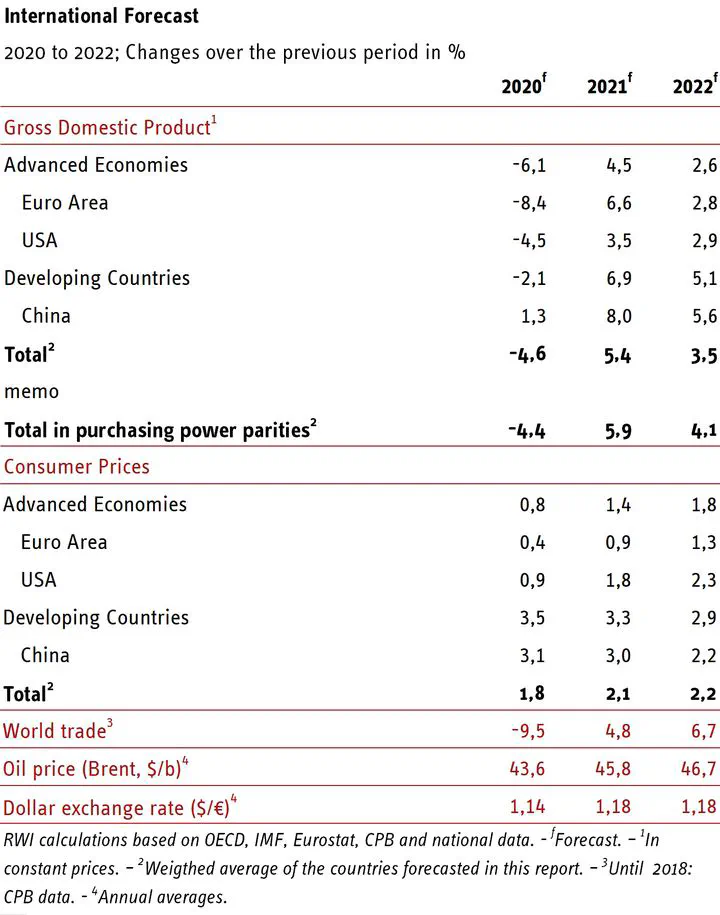Fall Forecast 2020: Global economy recovers from a historic collapse
 Image credit: RWI
Image credit: RWIThe global economy experienced in the second quarter its worst decline since the Great Depression of the 1930s. Overall economic activity in the industrialized countries was 9.8% lower than in the first quarter. World trade also collapsed in the spring. At its lowest point in May, it was 17.2% below the level before the pandemic outbreak in December 2019.
Economic policy has adopted extensive measures to support the economy. Monetary policy has lowered interest rates and expanded asset purchase. Fiscal policy adopted extensive measures to support incomes of the private sector.
The latest monthly indicators on industrial production, consumer, and business sentiment suggest a strong recovery of the economic activity over the summer. The beginning of this rebound generally coincides with the decline of new infections and the associated gradual lifting of infection control measures. In June, the volume of world trade recovered significantly and the RWI/ISL container index rose noticeably in July. Daily mobility data also point to a gradual normalization of economic activity in many economic sectors. Tourism, however, is a major exception.
Against this background, we expect a significant contraction in GDP of 4.6% for this year. This decline is due to the significant slump in overall economic activity throughout the first half. For the second half of the current year, we expect a significant recovery of the economy. In the third quarter in particular, economic activity should increase significantly due to catchup effects. Inflation should remain moderate due to weak demand and base effects in energy prices. We expect prices to rise by 1.8% this year.
Towards the end of the forecast horizon the pace of the rebound is likely to slow significantly, compared with the second half of 2020. We expect GDP to increase by 5.4% in 2021. In 2022, overall economic activity is expected to expand by 3.5%. Production should therefore return to its pre-crisis level in 2021. The upward trend in prices should pick up slightly as capacity utilization increases. We expect an inflation rate of 2.1% in 2021 and a mild increase to 2.2% in 2022.